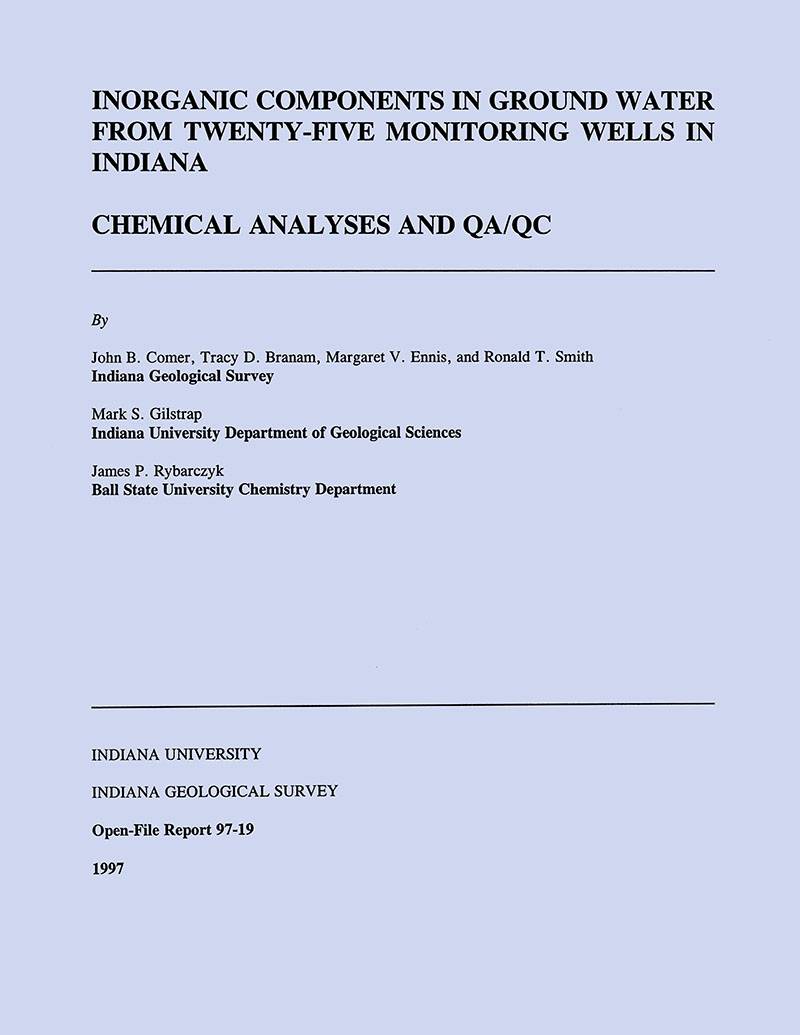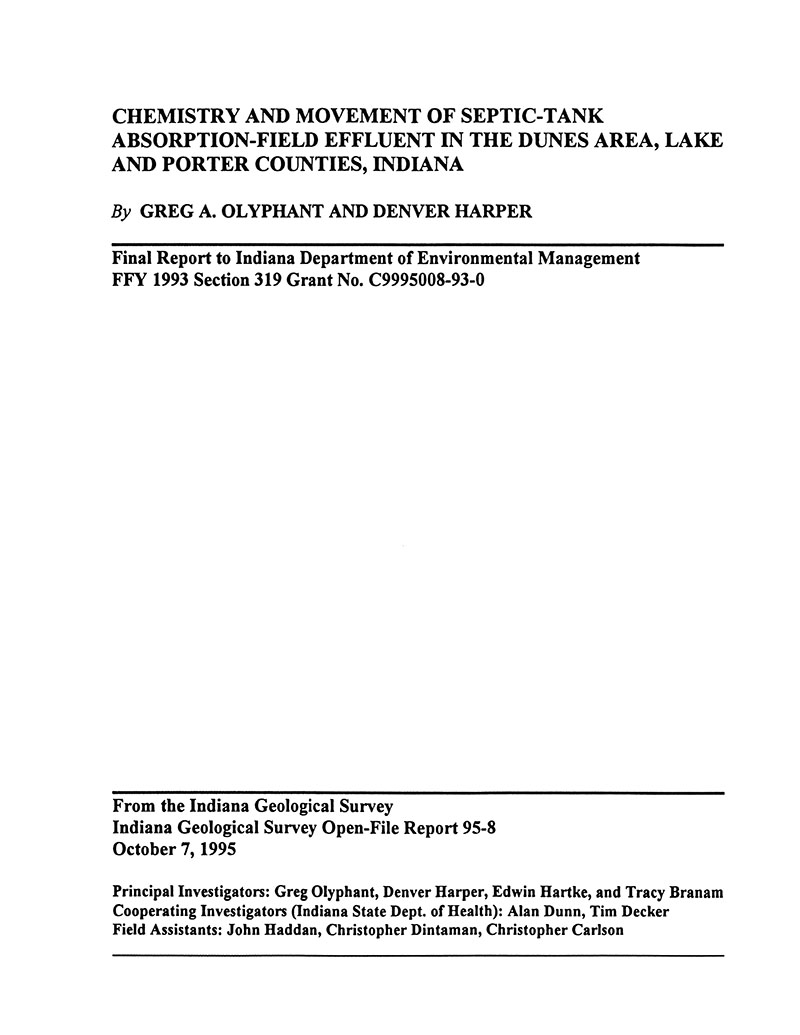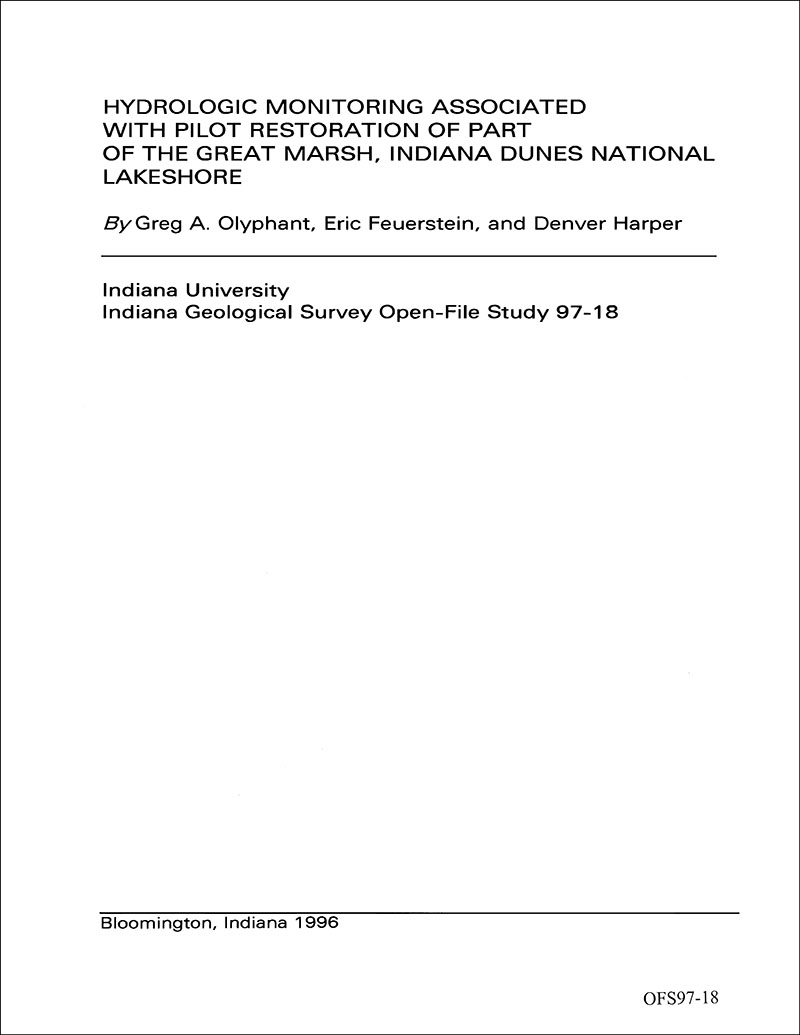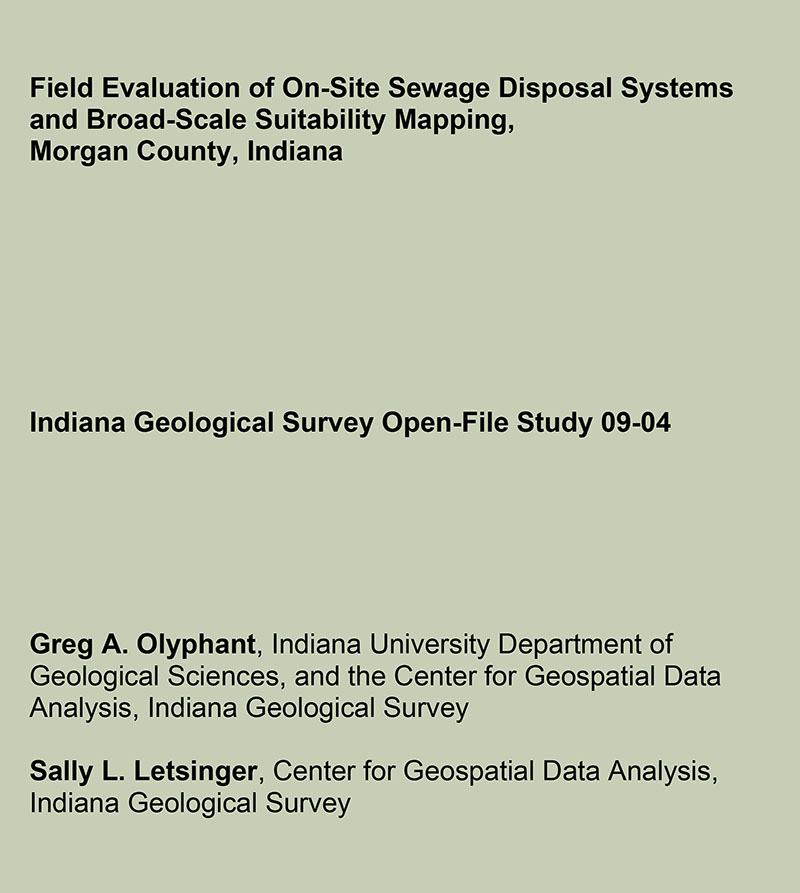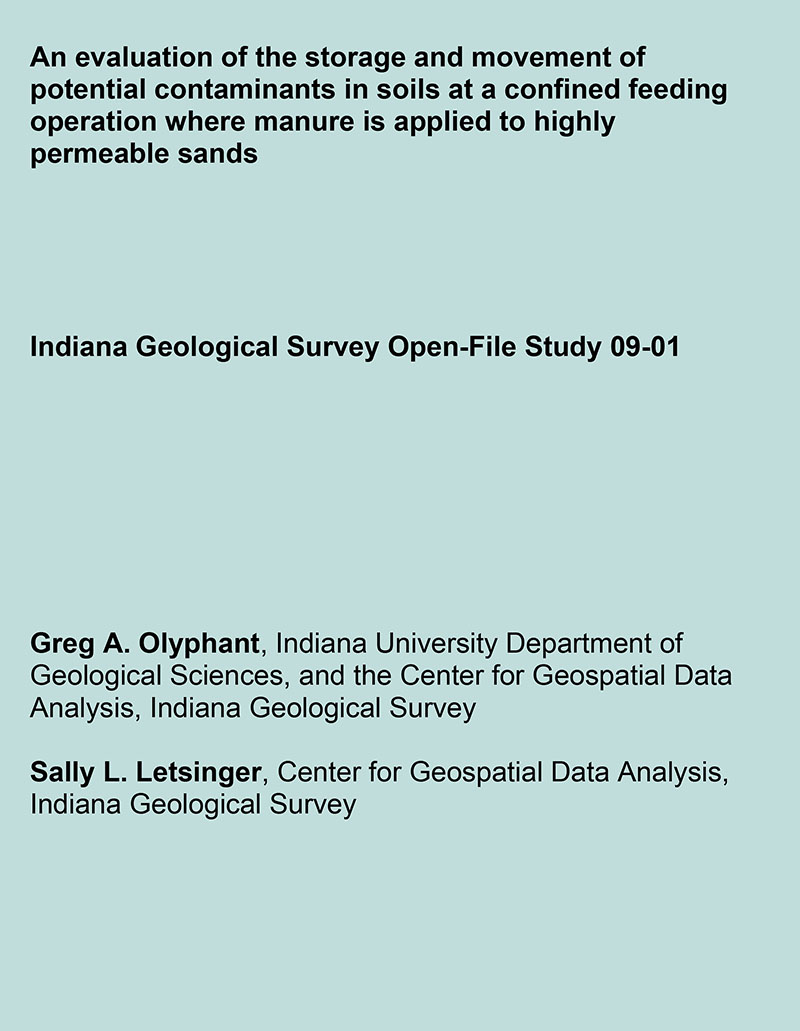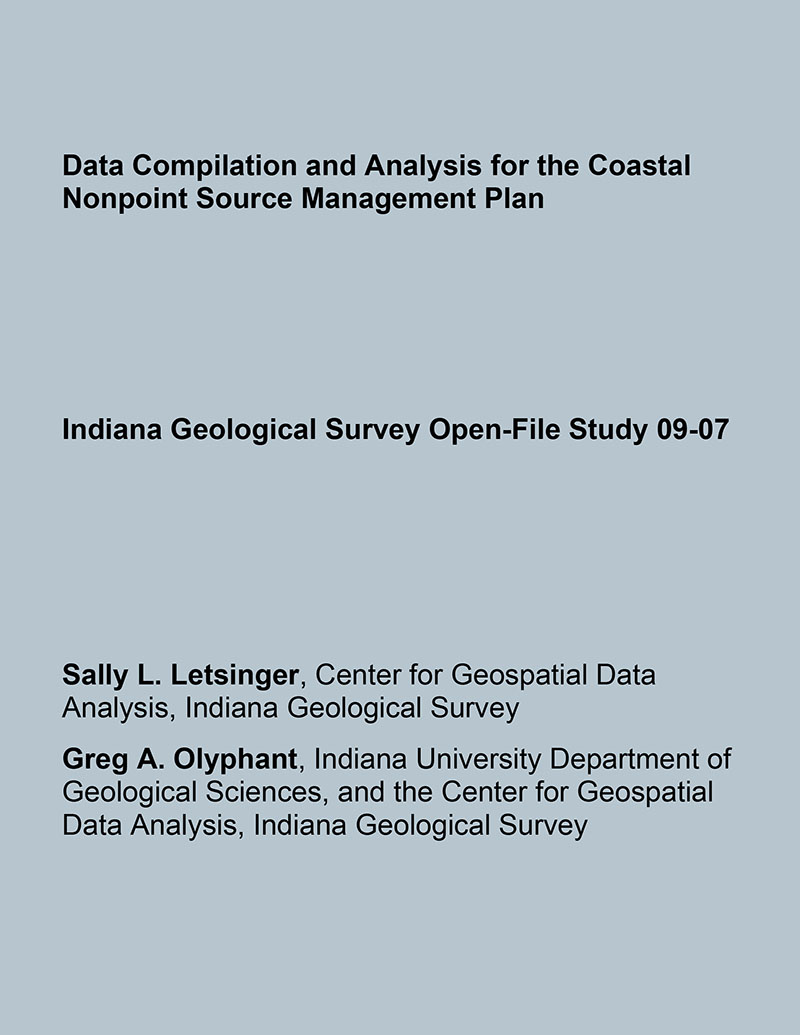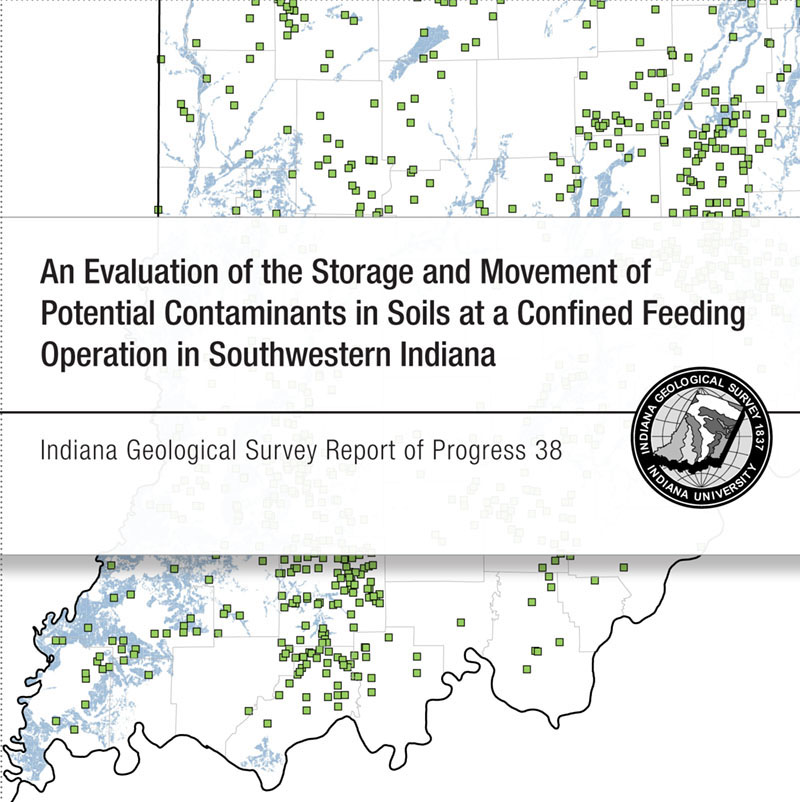SUMMARY: Samples of groundwater in unsaturated and saturated sands below septic-system drywalls in Beverly Shores, Indiana, were acquired during both wet and dry seasons of an 18-month period. Data were collected at two residences: one was situated high on a dune crest, where the water table was more than 20 m below the ground, and the other was situated in a low-lying area adjacent to a wetland of the Indiana Dunes National Lakeshore. Plumes of contamination, represented by elevated chloride concentrations, existed in the unsaturated zone immediately below the drywalls. Contamination decreased with depth and disappeared before reaching the water table at the elevated site but extended into the water table aquifer at the low-lying site. At the low site, large, rapid responses of the water table occurred after major rainstorms, indicating rapid downward movement of infiltrated rainfall. At the elevated site, the water-table response, if any, was small and greatly delayed. At the low site, mounding of the water table beneath the domestic well created a local groundwater flow-gradient capable of causing movement of contamination at a rate of as much as 48 cm d-1 toward the contamination of the aquifer beneath the septic system drywall was not great enough to pose a health threat. An injection test at the low site showed that the water table rises rapidly in response to large outflows to the drywall. High concentrations of the chemical tracer (sodium bromide) appeared in the unsaturated zone soon after the injection; nine days later, the tracer appeared in the saturated zone, where its concentration was low. While the potential for aquifer contamination in the dunes area is great, our observations indicate that site-specific factors - such as topography, soil-moisture conditions, residential density, and rates and durations of effluent production - govern the degree of local contamination and the rates at which contaminants move vertically and laterally through the highly permeable dune sands.
Olyphant, G. A., Harper, D. 1994, Ground-water chemistry and flow near septic-system drywells in dunes along Lake Michigan, Northern Indiana: Indiana Geological Survey Open-File Study 94-07, 9 p., 9 fig.
Notes: Publications in the Indiana Geological Survey Open-File series have been inconsistently named using a variety of series titles including "Open-File Report," "Open-File Map," and "Open-File Study." Prior to 1994, a publication in this series was generally referred to as an "Open-File Report" (but not always). To help reduce confusion created by these inconsistencies, the IGS now refers to every publication in the Open-File series as an "Open-File Study." To be entirely correct in writing a bibliographic reference for a publication, one should use the series name and number that appears on the publication itself.
Final Report to Indiana Department of Environmental Management FFY 1991 Section 319 Grant No. C9995008-02-0.
You may also like:
Keywords: Indiana Dunes, geochemistry, groundwater
Can't find what you're looking for? Feel free to contact us directly:
Indiana Geological and Water Survey
1001 E. 10th St.
Bloomington, IN 47405
812-855-7636 (phone)
812-855-2862 (fax)
IGWSinfo@indiana.edu
IGS Return Policy
- Original sales receipt required.
- Returns accepted within 30 days of purchase date.
- Refund will be issued by the same method of payment as purchased.
- Products must be returned in the same new condition as purchased.
- Refunds on custom orders and digital products are NOT allowed.
- Customers are responsible for paying shipping costs to return products.
Updated 8/19/2020




